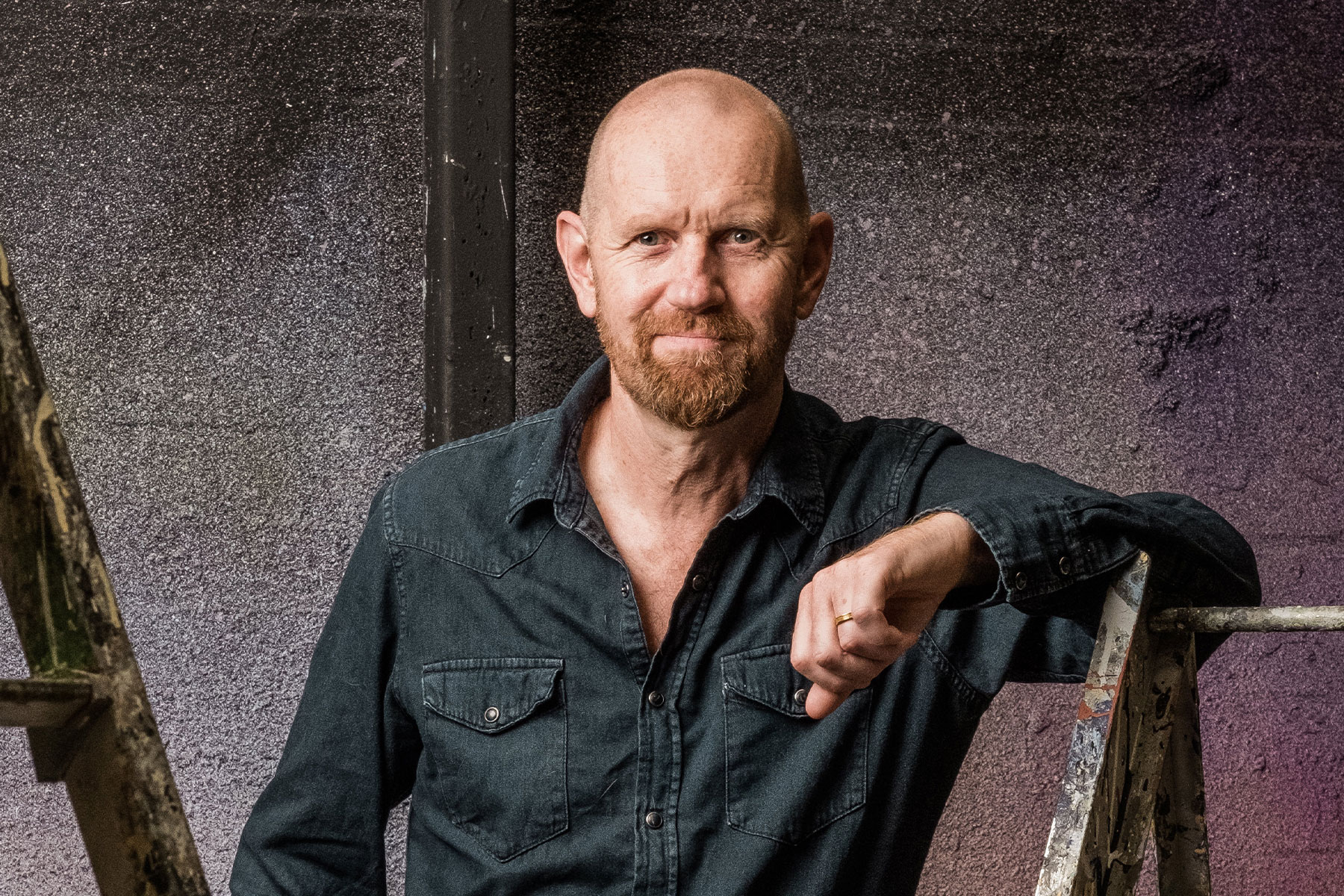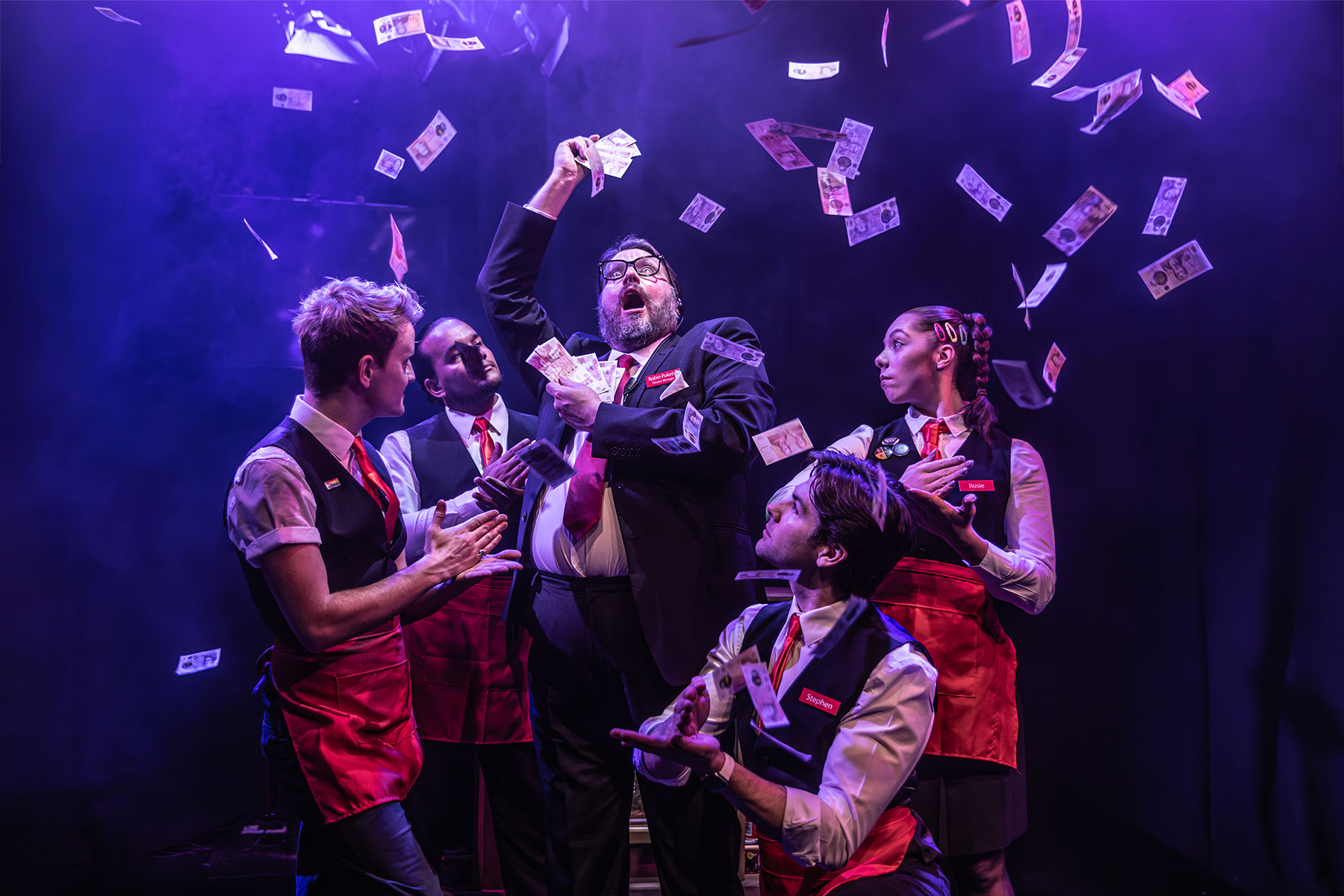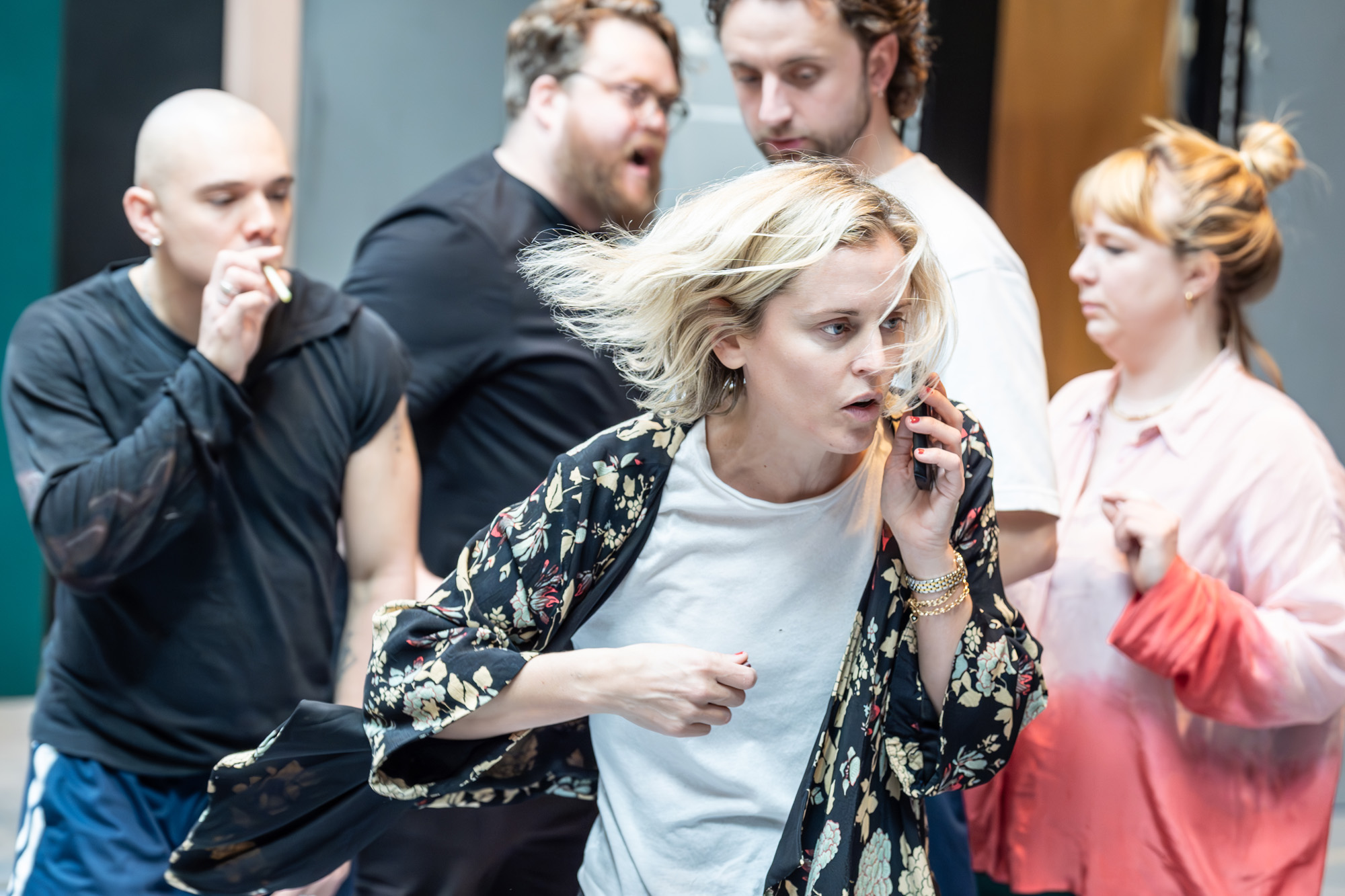Roald Dahl’s Little Red Riding Hood & The Three Little Pigs (tour – Stevenage, Gordon Craig Theatre)
Wolves are scary, okay? Especially hungry ones. But they’re nothing which a pistol-packin’ feisty young lass in a red cloak can’t cope with. Roald Dahl’s take on two traditional nursery stories – Little Red Riding Hood and The Three Little Pigs has been metamorphosed into an enjoyable dance-drama by the enterprising Ballet Cymru to a witty score by Paul Patterson. The addition of a third tale might, however, have balanced the two halves of the programme better.
Dahl’s words are spoken by a tail-coated narrator (Sam Bishop) who also displays good extension. The beautifully non-PC heroine is Emily Pimm Edwards, neat of foot with the ability to command a stage. Her two opponents are first Daisuke Miura as the grey-breeched wolf and then Nicolas Capelle as his russet-trousered elder. Both wear an elongated animal headpiece and have slinky movements as well as a brace of hilarious death scenes.
Red Riding Hood’s Granny comes in two shapes. There’s Aimée Williamson, coyly bonneted and tip-toeing around with a series of bourées en pointe rather like a refugee from Cranford. And there’s raucous imbibing Iselin Ein Bowen as the toughest morsel ever winkled out of a rocking-chair into a ravenous wolf’s stomach. The three little pigs are well contrasted by Lydia Arnoux, Daniel Morrison and Mandev Sokhi, the latter a species of porcine Walter Raleigh.
Steve Denton is the designer, using a combination of projections to suggest place, time of day and the disappearance of the pigs’ houses as well as simple pieces of set. I suspect that the projections, like John Bishops lighting plot, will settle down as the tour progresses; these things take time to bed themselves in. The sound balance for Bishop’s well-inflected narration could also be improved. But these scarcely distract from what is both a clever introduction to the conventions of classical ballet and a theatrical experience in its own right.










